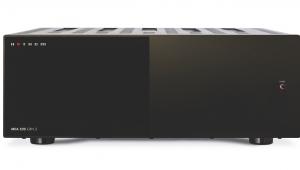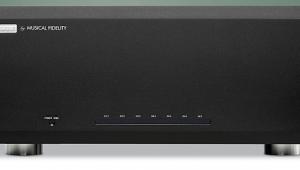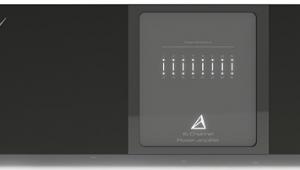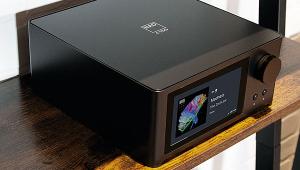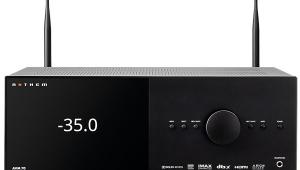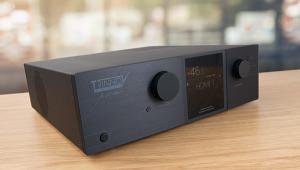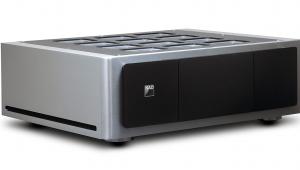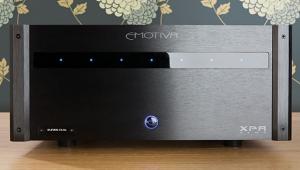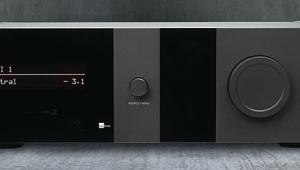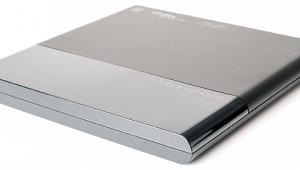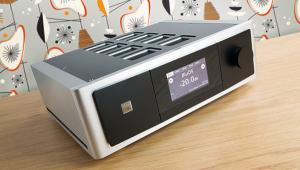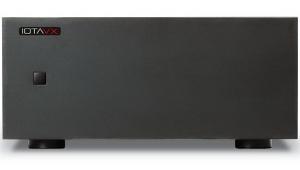Anthem AVM 90 15.4-channel Dolby Atmos AV Processor Review
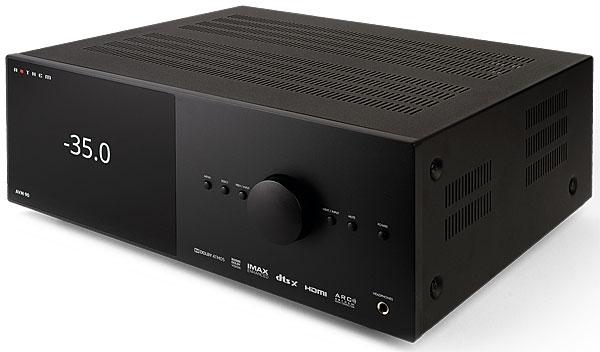
 Steve Withers has an object-audio ball with Anthem's most sophisticated AV processor yet
Steve Withers has an object-audio ball with Anthem's most sophisticated AV processor yet
Anthem's AVM 90 has been a long time coming, but it heralds the completion of the Canadian manufacturer's upgraded AV lineup. And while first announced in October 2020, the delayed arrival of this top-of-the-range processor hasn't seemed to harm it. Rather, it means Anthem has been able to offer HDMI 2.1 compatibility out of the box, certainly a demanded feature when a product sells for a cool £6,749.
This new flagship processor joins the previously released AVM 70 (HCC #326), and a trio of AV receivers: the MRX 1140; the mid-range MRX 740 (HCC #321); and the entry-level MRX 540. While the receivers have their own built-in grunt, the processors can be partnered with Anthem's matching power amps: the two-channel MCA 225, the three-channel MCA 325, and the five-channel MCA 525.
No Stone Left Unturned
Now, the AVM 90's asking price is admittedly a sizable chunk of cheddar, but backing it up is an uncompromising approach, with a discrete 15.4-channel experience – Dolby Atmos, DTS:X, and IMAX Enhanced – on the menu.
At this point you might be thinking, should I instead look to the AVM 70 and save myself three grand? Well you could, but there are a number of important differences between these two models.
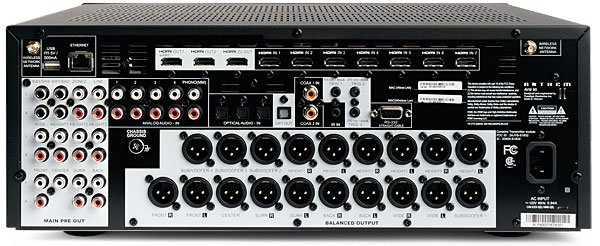
First of all, while both support the main object-based audio formats, the AVM 90 decodes and processes them using a total of 19 channels with four independent subwoofers. If that sounds like overkill, I'll explain why four subs are a useful addition later in the review. But basically, it means you can run a fully discrete and insanely immersive 9.4.6-channel system.
The AVM 90 also features a comprehensively overhauled interior, and one that Anthem believes represents the 'culmination of everything we know'. A new 32-bit/768kHz ESS Sabre DAC stage applies conversion to all 19 channels, while an 'oversized, high-efficiency' toroidal power supply is employed to help isolate 'high power signals' from the critical audio circuits.
Anthem further states the processor's entire signal path has been upgraded, with op-amps and resistors chosen for their distortion limiting capabilities. It also says that as the 'complexity and density' of its design grew, it required the use of new isolated circuit boards. All this under-the-bonnet soldering and fettling 'allowed our engineers the freedom to ensure every channel has a unique, low cross-talk and pristine signal path.'

Finally, the AVM 90 gets a 1.6GHz dual-core DSP platform, featuring a 32-bit floating-point audio data path and 64-bit floating-point computation and double-precision filter states. If all that techno-babble is a bit of a mouthful, it basically means the AVM 90 will be able to get the most out of Anthem's superb ARC Genesis room correction software.
HDR In All Flavours
Connectivity has also been upgraded. Ranged along the top of the processor's rear panel are seven HDMI 2.1 inputs and three corresponding outputs. This not only means the AVM 90 supports eARC, HDCP 2.3 and 8K/60 video, it also passes HDR10, HLG, HDR10+ and Dolby Vision, which I'd argue is essential for a unit at this price. Meanwhile, hardcore gamers can geek out on the support for 4K/120, ALLM, QFT, QMS, and VRR. In fairness, Anthem's new HDMI 2.1 board will also be offered as an upgrade for the AVM 70 (and Anthem's AV receivers) later this year, although the exact pricing and timing has yet to be announced.
From the outside the AVM 90 looks identical to all the other products in Anthem's refreshed lineup, with the same minimalist styling and two-tone finish. On the glossy side you'll find the TFT display, while the matte side houses some basic controls and a 6.3mm headphone jack.
Things are also very similar at the rear, although the AVM 90 obviously has two more sub outputs compared to the AVM 70. As a result, you get 15.4-channel balanced XLR outputs, along with matching (and unbalanced) RCA outputs for those who'd rather use phono connectors.
HDMI ports aside, the other physical connections are identical with five analogue inputs (including a phono stage for any vinyl freaks), three optical digital inputs, and a pair of coaxial digital inputs. In addition, there's an IR input and 12V triggers, along with RS232 and IP control capabilities.
 |
Home Cinema Choice #351 is on sale now, featuring: Samsung S95D flagship OLED TV; Ascendo loudspeakers; Pioneer VSA-LX805 AV receiver; UST projector roundup; 2024’s summer movies; Conan 4K; and more
|



